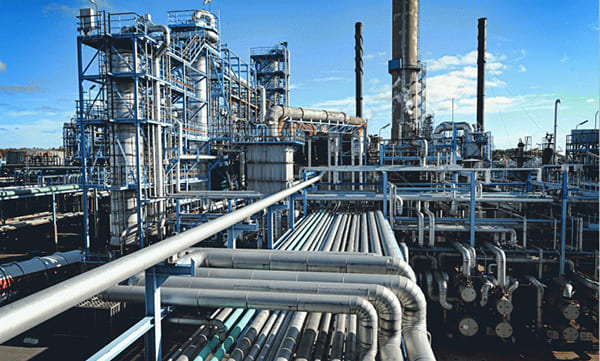The Path to Improvement is a Journey.
Mindset Change Needed
Twenty years ago, safety departments owned workplace “safety,” and if incidents occurred, it fell to them for resolution. Today, while everyone understands the importance of safety when it comes to a manufacturing facility, changing the entrenched mindset from the plant floor to the boardroom continues to be an ongoing journey, one that requires everyone’s understanding that safety truly is everyone’s responsibility…a journey that requires significant time and effort. Now, after many years, the importance of a top safety program is well documented and understood. And so it is now, this same journey that “operational reliability” and “asset availability” now face.
Every manufacturing facility has some level of unused assets being wasted due to inefficiency and unreliability. In many organizations, this unreliability is perceived as a problem for the reliability department. However, reliability is one of the most overlooked opportunities that can positively impact three key components of any organization—customer loyalty, employee satisfaction, and profitability.
Fortunately, not all organizations are waiting to take advantage of the positive attributes of reliability. Today, many organizations have the full support of their executive leadership and are following a path to high-level performance and higher profitability. The proper mindset and adherence to a few basic principles is what sets industry leaders apart from others when undertaking any improvement initiative.
Becoming Reliable is a Journey
The further an organization is from first-quartile (Q1) performance, the longer it will take that organization to achieve top-tier performance. Becoming reliable is a journey; it doesn’t just happen overnight, nor does it result from simply stating your organization is reliable. Attaining Q1 performance requires significant planning, effort, time, and buy-in from all staffing levels.
Through analysis of our industry Comparative Performance Analysis™ (CPA™) benchmarking data, we have identified that a significant number of clients begin to make progress once they have been actively pursuing their performance improvement journey for at least 4 years; for Solomon, that equates to two full benchmarking cycles. These same clients are observing improvements at a more accelerated rate. Throughout this process, these clients have modified work practices and processes, and at times, increased spending in targeted areas to revitalize assets.
As with Safety, a Lasting Change Requires a Culture Change
Most importantly, these clients realize a culture change is necessary to ensure lasting change. We have consistently seen that changing the behaviors of an organization to reduce or eliminate failure dramatically impacts the speed at which the journey develops. Every year, technology improves, and new tools become exceptional resources in their reliability toolbox. However, similar to safety, unless there is a fundamental behavioral shift throughout the organization to embrace failure-free operation and reward proactive rather than reactive behaviors, improvements will be slow to materialize. As with safety, it takes the full involvement of everyone within the organization to become more reliable.
Culture and Performance – Intertwined and Inseparable
The concept of failure-free operation becomes possible only when fully supported by management and they begin encouraging proactive measures at the earliest signs of failure. Avoiding the regular occurrence of “abnormal” is a common thread among Q1 performers. While actively working on technology improvements, streamlined work processes, and improved diagnostics and communications, Q1 performers continuously work on establishing more proactive behaviors while seeking to understand any failure mechanisms that occur in the system. They use their findings to educate and benefit the entire organization. Proponents of failure-free operations are fearless when it comes to uncovering and discussing potential problems and issues. They are never satisfied with where they are in their journey. They realize viewing issues from a different viewpoint provides them the opportunity to potentially detect issues earlier in the process, thereby becoming more proactive and less reactive.
No Shortcuts to Top Performance
One key pitfall you must avoid in your journey toward improved reliability is the tendency to become short-sighted and attempt to put cost-cutting measures before increased reliability. In a short-sighted view of profitability, cost-cutting becomes the primary mechanism to achieve performance targets. Ultimately, reliability will suffer and the ability to serve customers will falter. Top performers understand the path to improved performance follows a path known as the “inverted C” (Figure 1).
Initially, taking this path may require more spending to improve reliability, but the resulting reliability culture will have a significant, positive impact on cost. Study after study show that it is simply not possible to achieve sustainable improvement through cost-cutting mechanisms. Organizations who have tried this approach may see short-term improvement, but it is never sustainable.

Figure 1
Those who achieve sustainable performance may have to initially invest more money to create improved reliability results, but over time, their spending becomes progressively targeted and proactive. As a result, they are able to drive spending down while increasing reliability, following the counter-clockwise inverted C.
High Reliability and Reduced Maintenance Spending are Achievable...Once You Have Reliability
Only when you achieve a certain level of reliability through sustained cultural development and targeted maintenance spending will you continue to see reliability improve while overall maintenance spending decreases. You can expect that as the journey continues, overall reliability will continue to improve and overall maintenance spending will continue to be optimized. We continually see that the highest performing organizations consistently find the optimum amount of maintenance spending that delivers the highest operational availability (Figure 2).
Organizations that focus on improving reliability realize they must measure themselves against the industry’s best to ensure they are maintaining and/or improving their level of performance. And it is only through consistent, external benchmarking can they determine if the direction of their current improvement is on par with the industry and competition.

Figure 2
Without improved reliability, significant profitability is being wasted; without benchmarking, the level of this opportunity remains unknown.
Subscribe to receive periodic emails based on your area(s) of interest: Refining, Chemicals, Upstream, Midstream, Power Generation, Reliability & Maintenance.

.jpg)




.jpg)


.jpg)
.jpg)
.jpg)
.jpg)

.jpg)
.jpg)